Deck 26: Nucleosides, Nucleotides, and Nucleic Acids
Question
Question
Question
Question
Question
Question
Question
Question
Question
Question
Question
Question
Question
Question
Question
Question
Question
Question
Question
Question
Question
Question
Question
Question
Question
Question
Question
Question
Question
Question
Question
Question
Question
Question
Question
Question
Question
Question
Question
Question
Question
Question
Question
Question
Question
Question
Question
Question
Question
Question
Question
Question
Question
Question
Question
Question
Question
Question
Question
Question
Question
Question
Question
Question
Question
Question
Question
Question
Question
Question
Question
Question
Question
Question
Question
Question
Question
Question
Question
Question

Unlock Deck
Sign up to unlock the cards in this deck!
Unlock Deck
Unlock Deck
1/85
Play
Full screen (f)
Deck 26: Nucleosides, Nucleotides, and Nucleic Acids
1
Draw the structure of guanosine.
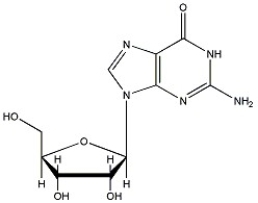
2
Identify the nucleoside shown below. 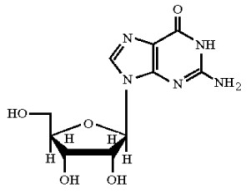
A)adenosine
B)guanosine
C)cytidine
D)uridine
E)thymidine

A)adenosine
B)guanosine
C)cytidine
D)uridine
E)thymidine
guanosine
3
Identify the nucleoside shown below. 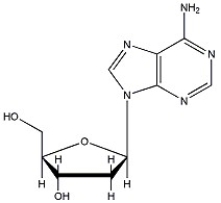

2'-deoxyadenosine
4
Which of the following are known as pyrimidines?
A)cytosine and thymine
B)adenine and cytosine
C)adenine and thymine
D)guanine and thymine
E)adenine and guanine
A)cytosine and thymine
B)adenine and cytosine
C)adenine and thymine
D)guanine and thymine
E)adenine and guanine

Unlock Deck
Unlock for access to all 85 flashcards in this deck.
Unlock Deck
k this deck
5
Draw the structure of UDP.

Unlock Deck
Unlock for access to all 85 flashcards in this deck.
Unlock Deck
k this deck
6
Which of the following statements concerning DNA, RNA, and their components is (are)not correct?
A)Phosphoric acid has three dissociable OH groups which can also react with alcohols to form phosphoesters.
B)Across the DNA helix, purine bases hydrogen bond only to other purine bases.
C)The two substituted pyrimidines in DNA are cytosine and thymine.
D)both B and C
E)none of the above
A)Phosphoric acid has three dissociable OH groups which can also react with alcohols to form phosphoesters.
B)Across the DNA helix, purine bases hydrogen bond only to other purine bases.
C)The two substituted pyrimidines in DNA are cytosine and thymine.
D)both B and C
E)none of the above

Unlock Deck
Unlock for access to all 85 flashcards in this deck.
Unlock Deck
k this deck
7
What are the four common ribonucleosides?

Unlock Deck
Unlock for access to all 85 flashcards in this deck.
Unlock Deck
k this deck
8
What is the major structural difference between a ribonucleoside and a ribonucleotide?

Unlock Deck
Unlock for access to all 85 flashcards in this deck.
Unlock Deck
k this deck
9
Draw the structure of 2'-deoxycytidine 3'-monophosphate.

Unlock Deck
Unlock for access to all 85 flashcards in this deck.
Unlock Deck
k this deck
10
Name the two purine bases which serve as components in ribonucleosides.

Unlock Deck
Unlock for access to all 85 flashcards in this deck.
Unlock Deck
k this deck
11
What is a nucleoside? Give an example.

Unlock Deck
Unlock for access to all 85 flashcards in this deck.
Unlock Deck
k this deck
12
When phosphoric acid is heated it loses water to form an anhydride known as pyrophosphate or pyrophosphoric acid. What is the structure of pyrophosphoric acid?
A)
B)
C)
D)
E)
A)

B)

C)

D)

E)


Unlock Deck
Unlock for access to all 85 flashcards in this deck.
Unlock Deck
k this deck
13
Show that you understand how the structural components of DNA are bonded together by drawing a linear segment that contains 3 base residues.

Unlock Deck
Unlock for access to all 85 flashcards in this deck.
Unlock Deck
k this deck
14
Draw the structure of AMP.

Unlock Deck
Unlock for access to all 85 flashcards in this deck.
Unlock Deck
k this deck
15
Which of the following is the proper name of the nucleoside made from adenine and found in DNA?
A)adenosine
B)2'-deoxyadenosine
C)2-deoxyadenosine
D)2'-oxyadenosine
E)2'-deoxyadenine
A)adenosine
B)2'-deoxyadenosine
C)2-deoxyadenosine
D)2'-oxyadenosine
E)2'-deoxyadenine

Unlock Deck
Unlock for access to all 85 flashcards in this deck.
Unlock Deck
k this deck
16
Which of the following bases distinguish DNA from RNA?
A)adenine and cytosine
B)guanine and uracil
C)thymine and uracil
D)uracil and guanine
E)adenine and thymine
A)adenine and cytosine
B)guanine and uracil
C)thymine and uracil
D)uracil and guanine
E)adenine and thymine

Unlock Deck
Unlock for access to all 85 flashcards in this deck.
Unlock Deck
k this deck
17
Identify the nucleoside shown below. 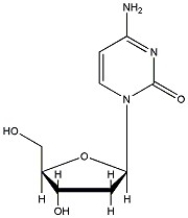


Unlock Deck
Unlock for access to all 85 flashcards in this deck.
Unlock Deck
k this deck
18
Besides a possible difference in base structure, what is the major structural difference between ribo- and deoxyribonucleosides?

Unlock Deck
Unlock for access to all 85 flashcards in this deck.
Unlock Deck
k this deck
19
Name the two pyrimidine bases which serve as components in deoxyribonucleotides.

Unlock Deck
Unlock for access to all 85 flashcards in this deck.
Unlock Deck
k this deck
20
What is a nucleotide? Give an example.

Unlock Deck
Unlock for access to all 85 flashcards in this deck.
Unlock Deck
k this deck
21
Name the compound. 


Unlock Deck
Unlock for access to all 85 flashcards in this deck.
Unlock Deck
k this deck
22
Identify the structure. 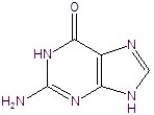
A)uracil
B)cytosine
C)guanine
D)thymine
E)adenine

A)uracil
B)cytosine
C)guanine
D)thymine
E)adenine

Unlock Deck
Unlock for access to all 85 flashcards in this deck.
Unlock Deck
k this deck
23
Which of the following statements is not true about the structure of DNA as proposed by Watson and Crick?
A)The number of adenines in DNA is equal to the number of thymines.
B)The number of cytosines is equal to the number of guanines.
C)DNA consists of two strands of nucleic acids with the sugar-phosphate backbone on the inside and the bases on the outside.
D)The chains in DNA are held together by hydrogen bonding.
E)Adenine always pairs with thymine and guanine always pairs with cytosine.
A)The number of adenines in DNA is equal to the number of thymines.
B)The number of cytosines is equal to the number of guanines.
C)DNA consists of two strands of nucleic acids with the sugar-phosphate backbone on the inside and the bases on the outside.
D)The chains in DNA are held together by hydrogen bonding.
E)Adenine always pairs with thymine and guanine always pairs with cytosine.

Unlock Deck
Unlock for access to all 85 flashcards in this deck.
Unlock Deck
k this deck
24
Draw the structure of UMP.

Unlock Deck
Unlock for access to all 85 flashcards in this deck.
Unlock Deck
k this deck
25
Draw the structure of cytidine 5'-phosphate.

Unlock Deck
Unlock for access to all 85 flashcards in this deck.
Unlock Deck
k this deck
26
A commonly known nucleotide is adenosine 3', 5'-phosphate (cAMP). What is the structure of cAMP?

Unlock Deck
Unlock for access to all 85 flashcards in this deck.
Unlock Deck
k this deck
27
Draw the structure of ADP.

Unlock Deck
Unlock for access to all 85 flashcards in this deck.
Unlock Deck
k this deck
28
How many hydrogen bonds exist between the cytosine/guanine base pairs?
A)1
B)2
C)3
D)4
E)5
A)1
B)2
C)3
D)4
E)5

Unlock Deck
Unlock for access to all 85 flashcards in this deck.
Unlock Deck
k this deck
29
Draw the structure of uridine.

Unlock Deck
Unlock for access to all 85 flashcards in this deck.
Unlock Deck
k this deck
30
Which of the following constitutes the primary structure of a nucleic acid?
A)the sequence of the bases in the strand
B)the sequence of the riboses in the strand
C)the sequence of the deoxyriboses in the strand
D)the sequence of the phosphodiesters in the strand
E)the sequence of the 5'-OH groups in the strand
A)the sequence of the bases in the strand
B)the sequence of the riboses in the strand
C)the sequence of the deoxyriboses in the strand
D)the sequence of the phosphodiesters in the strand
E)the sequence of the 5'-OH groups in the strand

Unlock Deck
Unlock for access to all 85 flashcards in this deck.
Unlock Deck
k this deck
31
Which of the following reaction sequences best describes the formation of the nucleic acid in the biosynthesis of DNA?
A)nucleophilic attack of a 5'-OH group of one nucleotide on the β-phosphorus of another
B)nucleophilic attack of a 5'-OH group of one nucleotide on the α-phosphorus of another
C)nucleophilic attack of a 3'-OH group of a nucleotide on the γ-phosphorus of another
D)nucleophilic attack of a 3'-OH group of one nucleotide on the β-phosphorus of another
E)nucleophilic attack of a 3'-OH group of one nucleotide on the α-phosphorus of another
A)nucleophilic attack of a 5'-OH group of one nucleotide on the β-phosphorus of another
B)nucleophilic attack of a 5'-OH group of one nucleotide on the α-phosphorus of another
C)nucleophilic attack of a 3'-OH group of a nucleotide on the γ-phosphorus of another
D)nucleophilic attack of a 3'-OH group of one nucleotide on the β-phosphorus of another
E)nucleophilic attack of a 3'-OH group of one nucleotide on the α-phosphorus of another

Unlock Deck
Unlock for access to all 85 flashcards in this deck.
Unlock Deck
k this deck
32
Draw the structure of thymidine.

Unlock Deck
Unlock for access to all 85 flashcards in this deck.
Unlock Deck
k this deck
33
Identify the sugar and the base in the structure below. 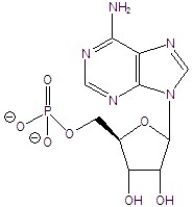


Unlock Deck
Unlock for access to all 85 flashcards in this deck.
Unlock Deck
k this deck
34
Propose a mechanism for the formation of cyclic AMP from ATP.

Unlock Deck
Unlock for access to all 85 flashcards in this deck.
Unlock Deck
k this deck
35
Identify the sugar and the base in the structure below. 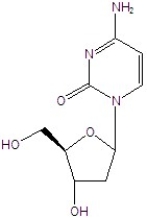


Unlock Deck
Unlock for access to all 85 flashcards in this deck.
Unlock Deck
k this deck
36
Which of the following phosphate groups is found in nucleic acids?
A)
B)
C)
D)
E)
A)

B)

C)

D)

E)


Unlock Deck
Unlock for access to all 85 flashcards in this deck.
Unlock Deck
k this deck
37
Identify the structure. 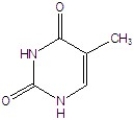
A)uracil
B)cytosine
C)guanine
D)thymine
E)adenine

A)uracil
B)cytosine
C)guanine
D)thymine
E)adenine

Unlock Deck
Unlock for access to all 85 flashcards in this deck.
Unlock Deck
k this deck
38
Draw the structure of dTTP.

Unlock Deck
Unlock for access to all 85 flashcards in this deck.
Unlock Deck
k this deck
39
Draw the structure of TTP.

Unlock Deck
Unlock for access to all 85 flashcards in this deck.
Unlock Deck
k this deck
40
Draw the structure of ATP.

Unlock Deck
Unlock for access to all 85 flashcards in this deck.
Unlock Deck
k this deck
41
In which of the following helical forms does DNA in living organisms mainly exist?
A)Z-helix
B)a-helix
C)b-helix
D)B and C
E)A, B and C
A)Z-helix
B)a-helix
C)b-helix
D)B and C
E)A, B and C

Unlock Deck
Unlock for access to all 85 flashcards in this deck.
Unlock Deck
k this deck
42
Show the hydrogen bonding which occurs when guanine and cytosine form a base pair.

Unlock Deck
Unlock for access to all 85 flashcards in this deck.
Unlock Deck
k this deck
43
Give the order for base pairing for the following strand. G-C-A-T-T-C-C-G-A-T
A)C-G-U-A-A-G-G-C-U-A
B)U-G-T-A-A-G-G-U-T-U
C)A-T-G-C-C-T-T-A-G-C
D)T-A-C-G-G-A-A-T-C-G
E)C-G-T-A-A-G-G-C-T-A
A)C-G-U-A-A-G-G-C-U-A
B)U-G-T-A-A-G-G-U-T-U
C)A-T-G-C-C-T-T-A-G-C
D)T-A-C-G-G-A-A-T-C-G
E)C-G-T-A-A-G-G-C-T-A

Unlock Deck
Unlock for access to all 85 flashcards in this deck.
Unlock Deck
k this deck
44
Show the hydrogen bonding which occurs when adenine and thymine form a base pair.

Unlock Deck
Unlock for access to all 85 flashcards in this deck.
Unlock Deck
k this deck
45
How many billion base pairs are there in the total DNA of a human cell?
A)3
B)5
C)8
D)11
E)13
A)3
B)5
C)8
D)11
E)13

Unlock Deck
Unlock for access to all 85 flashcards in this deck.
Unlock Deck
k this deck
46
What is the sequence of bases in the strand of DNA that is complementary to that shown below? 5'-T-T-C-A-C-T-G-A-C-3'
A)5'-T-T-C-A-C-T-G-A-C-3'
B)3'-T-T-C-A-C-T-G-A-C-5'
C)5'-A-A-G-T-G-A-C-T-G-3'
D)5'-G-T-C-A-G-T-G-A-A-3'
E)3'-U-U-C-A-C-U-G-A-C-5'
A)5'-T-T-C-A-C-T-G-A-C-3'
B)3'-T-T-C-A-C-T-G-A-C-5'
C)5'-A-A-G-T-G-A-C-T-G-3'
D)5'-G-T-C-A-G-T-G-A-A-3'
E)3'-U-U-C-A-C-U-G-A-C-5'

Unlock Deck
Unlock for access to all 85 flashcards in this deck.
Unlock Deck
k this deck
47
Which of the following statements best describes the meaning of transcription?
A)It is the synthesis of rRNA from a DNA blueprint.
B)It is synonymous with replication.
C)It is the synthesis of identical copies from a DNA blueprint.
D)It is the synthesis of mRNA from a DNA blueprint.
E)It is the synthesis of tRNA from a DNA blueprint.
A)It is the synthesis of rRNA from a DNA blueprint.
B)It is synonymous with replication.
C)It is the synthesis of identical copies from a DNA blueprint.
D)It is the synthesis of mRNA from a DNA blueprint.
E)It is the synthesis of tRNA from a DNA blueprint.

Unlock Deck
Unlock for access to all 85 flashcards in this deck.
Unlock Deck
k this deck
48
Identify the bonding in DNA between the nucleotides.
A)5' to 4'
B)5' to 3'
C)3' to 5'
D)4' to 3'
E)3' to 4'
A)5' to 4'
B)5' to 3'
C)3' to 5'
D)4' to 3'
E)3' to 4'

Unlock Deck
Unlock for access to all 85 flashcards in this deck.
Unlock Deck
k this deck
49
Which of the following is the conventional method of writing the base sequence of a portion of a DNA chain?
A)5'-end--bases--5'-end
B)5'-end--bases--3'-end
C)3'-end--bases--5'-end
D)3'-end--bases--3'-end
E)5'-end--bases--2'-end
A)5'-end--bases--5'-end
B)5'-end--bases--3'-end
C)3'-end--bases--5'-end
D)3'-end--bases--3'-end
E)5'-end--bases--2'-end

Unlock Deck
Unlock for access to all 85 flashcards in this deck.
Unlock Deck
k this deck
50
What are stacking interactions in DNA and what purpose do they serve?

Unlock Deck
Unlock for access to all 85 flashcards in this deck.
Unlock Deck
k this deck
51
Why is RNA more easily cleaved than DNA?

Unlock Deck
Unlock for access to all 85 flashcards in this deck.
Unlock Deck
k this deck
52
Identify the type(s)of base pairing present in DNA.
A)adenine and thymine
B)cytosine and guanine
C)cytosine and thymine
D)adenine and uracil
E)thymine and adenine
A)adenine and thymine
B)cytosine and guanine
C)cytosine and thymine
D)adenine and uracil
E)thymine and adenine

Unlock Deck
Unlock for access to all 85 flashcards in this deck.
Unlock Deck
k this deck
53
What is meant by semiconservative DNA replication?

Unlock Deck
Unlock for access to all 85 flashcards in this deck.
Unlock Deck
k this deck
54
Which of the following statements is not true about RNA?
A)It is single stranded.
B)It is smaller than DNA.
C)It has fewer base pairs than DNA.
D)It exists exclusively in the nucleus of the cell.
E)There are three kinds: rRNA, mRNA, and tRNA.
A)It is single stranded.
B)It is smaller than DNA.
C)It has fewer base pairs than DNA.
D)It exists exclusively in the nucleus of the cell.
E)There are three kinds: rRNA, mRNA, and tRNA.

Unlock Deck
Unlock for access to all 85 flashcards in this deck.
Unlock Deck
k this deck
55
In an entire DNA strand, what percentage consists of genetic information and what percentage consists of introns?
A)98% genetic information, 2% introns
B)2% genetic information, 98% introns
C)50% genetic information, 50% introns
D)100% genetic information, 0% introns
E)99% genetic information, 1% introns
A)98% genetic information, 2% introns
B)2% genetic information, 98% introns
C)50% genetic information, 50% introns
D)100% genetic information, 0% introns
E)99% genetic information, 1% introns

Unlock Deck
Unlock for access to all 85 flashcards in this deck.
Unlock Deck
k this deck
56
List the number of pairs of chromosomes in a human.
A)18 pairs of chromosomes
B)20 pairs of chromosomes
C)23 pairs of chromosomes
D)25 pairs of chromosomes
E)27 pairs of chromosomes
A)18 pairs of chromosomes
B)20 pairs of chromosomes
C)23 pairs of chromosomes
D)25 pairs of chromosomes
E)27 pairs of chromosomes

Unlock Deck
Unlock for access to all 85 flashcards in this deck.
Unlock Deck
k this deck
57
Describe how RNA is easily cleaved.

Unlock Deck
Unlock for access to all 85 flashcards in this deck.
Unlock Deck
k this deck
58
Which of the following statements concerning nucleic acids is not correct?
A)The enzymes that catalyze DNA synthesis are known as DNA polymerases.
B)The growing DNA polymer is synthesized in the 5' to 3' direction.
C)RNA strands are synthesized in the 3' to 5' direction.
D)In DNA the distance between the strands of the double helix is relatively constant.
E)Unlike DNA, RNA is easily cleaved because the 2'-OH group of the ribose can act as the nucleophile that cleaves the strand.
A)The enzymes that catalyze DNA synthesis are known as DNA polymerases.
B)The growing DNA polymer is synthesized in the 5' to 3' direction.
C)RNA strands are synthesized in the 3' to 5' direction.
D)In DNA the distance between the strands of the double helix is relatively constant.
E)Unlike DNA, RNA is easily cleaved because the 2'-OH group of the ribose can act as the nucleophile that cleaves the strand.

Unlock Deck
Unlock for access to all 85 flashcards in this deck.
Unlock Deck
k this deck
59
Assuming that the human genome with its 3 billion base pairs is entirely in a b-helix, how long is the DNA in a human cell?

Unlock Deck
Unlock for access to all 85 flashcards in this deck.
Unlock Deck
k this deck
60
The human genome contains approximately how many base pairs?
A)300
B)300,000
C)3 x 109
D)3 x 1015
E)3 x 1023
A)300
B)300,000
C)3 x 109
D)3 x 1015
E)3 x 1023

Unlock Deck
Unlock for access to all 85 flashcards in this deck.
Unlock Deck
k this deck
61
What are Maxam-Gilbert and Sanger sequencing?

Unlock Deck
Unlock for access to all 85 flashcards in this deck.
Unlock Deck
k this deck
62
Methionine is the first amino acid incorporated into the heptapeptide specified by the following mRNA:
5'-AUGGACCCCGUUAUUAAACAC-3'.
What is the sequence of the amino acid in the heptapeptide?
5'-AUGGACCCCGUUAUUAAACAC-3'.
What is the sequence of the amino acid in the heptapeptide?

Unlock Deck
Unlock for access to all 85 flashcards in this deck.
Unlock Deck
k this deck
63
Which of the following reactions converts nucleotide subunits into nucleic acids?
A)nucleophilic attack on the α-phosphorus of ATP
B)nucleophilic attack on the β-phosphorus of ATP
C)nucleophilic attack on the γ-phosphorus of ATP
D)A and B
E)A, B and C
A)nucleophilic attack on the α-phosphorus of ATP
B)nucleophilic attack on the β-phosphorus of ATP
C)nucleophilic attack on the γ-phosphorus of ATP
D)A and B
E)A, B and C

Unlock Deck
Unlock for access to all 85 flashcards in this deck.
Unlock Deck
k this deck
64
Which of the following metal ions complexes with cellular ATP to neutralize some of its negative charges at the active site of an enzyme in order that nucleophilic substitution reactions proceed rapidly?
A)manganese
B)iron
C)cobalt
D)magnesium
E)calcium
A)manganese
B)iron
C)cobalt
D)magnesium
E)calcium

Unlock Deck
Unlock for access to all 85 flashcards in this deck.
Unlock Deck
k this deck
65
Which of the following statements best explains the source of energy behind the ATP molecule?
A)the energy released when a phosphoanhydride bond of ATP is broken
B)the energy released when adenosine binds to the phosphate
C)the energy released when ribose binds to the phosphate
D)the energy released when adenine binds to ribose
E)the energy released when ATP is reduced
A)the energy released when a phosphoanhydride bond of ATP is broken
B)the energy released when adenosine binds to the phosphate
C)the energy released when ribose binds to the phosphate
D)the energy released when adenine binds to ribose
E)the energy released when ATP is reduced

Unlock Deck
Unlock for access to all 85 flashcards in this deck.
Unlock Deck
k this deck
66
Which of the following explains the kinetic stability of ATP?
A)The hydrolysis of ATP occurs rapidly in the absence of a catalyst because the phosphate bonds are thermodynamically labile.
B)ATP is positively charged at physiological pH.
C)Water, the major component of cytoplasm, is a strong and very reactive nucleophile.
D)ATP is negatively charged at physiological pH and thus repels the approach of nucleophiles.
E)none of the above
A)The hydrolysis of ATP occurs rapidly in the absence of a catalyst because the phosphate bonds are thermodynamically labile.
B)ATP is positively charged at physiological pH.
C)Water, the major component of cytoplasm, is a strong and very reactive nucleophile.
D)ATP is negatively charged at physiological pH and thus repels the approach of nucleophiles.
E)none of the above

Unlock Deck
Unlock for access to all 85 flashcards in this deck.
Unlock Deck
k this deck
67
Give the first step of PCR.
A)esterification
B)strand separation
C)base-pairing of the primers
D)DNA synthesis
E)hydrolysis
A)esterification
B)strand separation
C)base-pairing of the primers
D)DNA synthesis
E)hydrolysis

Unlock Deck
Unlock for access to all 85 flashcards in this deck.
Unlock Deck
k this deck
68
Which of the following statements explains what nucleic acids are?
A)They are acidic in nature.
B)They are the carriers of genetic information.
C)DNA and RNA are collectively known as nucleic acids.
D)Nucleic acids are chains of five-membered ring sugars, each bonded to a heterocyclic amine, linked by phosphate groups.
E)all of the above
A)They are acidic in nature.
B)They are the carriers of genetic information.
C)DNA and RNA are collectively known as nucleic acids.
D)Nucleic acids are chains of five-membered ring sugars, each bonded to a heterocyclic amine, linked by phosphate groups.
E)all of the above

Unlock Deck
Unlock for access to all 85 flashcards in this deck.
Unlock Deck
k this deck
69
Which of the following base sequences would most likely be recognized by a restriction endonuclease?
A)ACGCGT
B)ACGGGT
C)ACACGT
D)ACATCGT
E)CCAACC
A)ACGCGT
B)ACGGGT
C)ACACGT
D)ACATCGT
E)CCAACC

Unlock Deck
Unlock for access to all 85 flashcards in this deck.
Unlock Deck
k this deck
70
Give the maximum number of different codons possible.
A)56
B)60
C)64
D)70
E)76
A)56
B)60
C)64
D)70
E)76

Unlock Deck
Unlock for access to all 85 flashcards in this deck.
Unlock Deck
k this deck
71
Which of the following is not true about retroviruses?
A)The genetic information is contained in RNA.
B)The genetic information flows from DNA to RNA.
C)Drugs have been designed to interfere with the synthesis of DNA by retroviruses.
D)AZT is a design drug that was synthesized to combat the HIV retrovirus.
E)The retrovirus uses the sequence of bases in RNA as a template to synthesize DNA which enters and infects the host cell.
A)The genetic information is contained in RNA.
B)The genetic information flows from DNA to RNA.
C)Drugs have been designed to interfere with the synthesis of DNA by retroviruses.
D)AZT is a design drug that was synthesized to combat the HIV retrovirus.
E)The retrovirus uses the sequence of bases in RNA as a template to synthesize DNA which enters and infects the host cell.

Unlock Deck
Unlock for access to all 85 flashcards in this deck.
Unlock Deck
k this deck
72
Which of the following is the first step in the mechanism of the reaction shown below? 
A)Carboxylate ion attacks the thiol.
B)Carboxylate ion attacks the α-phosphorus of ATP.
C)Carboxylate ion attacks the γ-phosphorus of ATP.
D)Thiol molecule attacks the β-phosphorus of ATP.
E)Thiol molecule attacks the acyl group.

A)Carboxylate ion attacks the thiol.
B)Carboxylate ion attacks the α-phosphorus of ATP.
C)Carboxylate ion attacks the γ-phosphorus of ATP.
D)Thiol molecule attacks the β-phosphorus of ATP.
E)Thiol molecule attacks the acyl group.

Unlock Deck
Unlock for access to all 85 flashcards in this deck.
Unlock Deck
k this deck
73
Which of the following is true about tRNA?
A)All tRNA's have a CCG sequence at the 3'-end.
B)All tRNA's have a CCG sequence at the 5'-end.
C)All tRNA's have a CCA sequence at the 5'-end.
D)All tRNA's have a CCA sequence at the 3'-end.
E)All tRNA's have a CAC sequence at the 3'-end.
A)All tRNA's have a CCG sequence at the 3'-end.
B)All tRNA's have a CCG sequence at the 5'-end.
C)All tRNA's have a CCA sequence at the 5'-end.
D)All tRNA's have a CCA sequence at the 3'-end.
E)All tRNA's have a CAC sequence at the 3'-end.

Unlock Deck
Unlock for access to all 85 flashcards in this deck.
Unlock Deck
k this deck
74
What is the composition of a ribosome?
A)40% protein, 60% rRNA
B)60% protein, 40% tRNA
C)40% protein, 60% tRNA
D)40% protein, 60% mRNA
E)100% protein, 0% rRNA
A)40% protein, 60% rRNA
B)60% protein, 40% tRNA
C)40% protein, 60% tRNA
D)40% protein, 60% mRNA
E)100% protein, 0% rRNA

Unlock Deck
Unlock for access to all 85 flashcards in this deck.
Unlock Deck
k this deck
75
For what compound is ATP an abbreviation?
A)adenine triphosphate
B)adenosine tetraphosphate
C)adenine tetraphosphate
D)adenosine triphosphate
E)adenine triphosphoric acid
A)adenine triphosphate
B)adenosine tetraphosphate
C)adenine tetraphosphate
D)adenosine triphosphate
E)adenine triphosphoric acid

Unlock Deck
Unlock for access to all 85 flashcards in this deck.
Unlock Deck
k this deck
76
What is a codon? Give an example.

Unlock Deck
Unlock for access to all 85 flashcards in this deck.
Unlock Deck
k this deck
77
Give the second step of PCR.
A)esterification
B)strand separation
C)base-pairing of the primers
D)DNA synthesis
E)hydrolysis
A)esterification
B)strand separation
C)base-pairing of the primers
D)DNA synthesis
E)hydrolysis

Unlock Deck
Unlock for access to all 85 flashcards in this deck.
Unlock Deck
k this deck
78
All tRNAs have ________ at the 3'-end.
A)CCA
B)UUC
C)GCC
D)CAG
E)GGA
A)CCA
B)UUC
C)GCC
D)CAG
E)GGA

Unlock Deck
Unlock for access to all 85 flashcards in this deck.
Unlock Deck
k this deck
79
What is the most favored reaction when an amino acid and ATP react together?
A)nucleophilic attack on a-phosphorus
B)nucleophilic attack on b-phosphorus
C)nucleophilic attack on g-phosphorus
D)nucleophilic attack on the NH2 of adenosine
E)nucleophilic attack on the aromatic nitrogen of adenosine
A)nucleophilic attack on a-phosphorus
B)nucleophilic attack on b-phosphorus
C)nucleophilic attack on g-phosphorus
D)nucleophilic attack on the NH2 of adenosine
E)nucleophilic attack on the aromatic nitrogen of adenosine

Unlock Deck
Unlock for access to all 85 flashcards in this deck.
Unlock Deck
k this deck
80
Give the final product of an amino acid reacting with ATP, then t-RNA.

Unlock Deck
Unlock for access to all 85 flashcards in this deck.
Unlock Deck
k this deck



